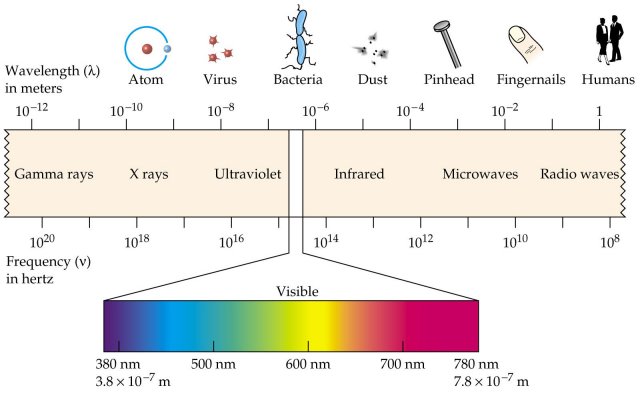The radiation RF-EMF causes damaged DNA, heat to the tissues and can disrupt the blood-brain-barrier. is emf radiation harmful are real, and ARPANSA is active in collaborating with the EHS communities, medical experts as well as researchers. The agency will continue to examine research regarding the health effects caused by EMF radiation.
RF-EMF damages DNA
exposed to electromagnetic fields that are created by man (EMFs) are associated with DNA damage as well as negative health adverse effects. EMFs can disrupt intracellular ionic concentrations, which are essential to ensure the electrochemical balance of cells. In turn, this can disrupt cell homeostasis, resulting in DNA damage. Moreover exposure to EMFs is also associated with an overproduction of free radicals as well as reactive oxygen species (ROS).
Exposure to RF-EMF radiation has been associated with changes in male germ cells' development. This is due to the differentiation of the germ cell into spermatozoa, aswell maturation of the functional aspect as spermatozoa travel across the epididymis. To determine the sensitivity of RF-EMF exposure to male germ cell development, a specifically-designed waveguide device was developed to expose unrestrained mice to RF-EME at 2.2 W/kg.

In a recent study researchers discovered that exposure to RF-EME caused an oxidative DNA damage to the spermatozoa. Sperm DNA fragmentation increased by 18% after an entire week of treatment and by 23% after 5 weeks. Furthermore, DNA damage in mitochondria was observed by measuring the level of a biomarker, 8-hydroxy-2-deoxyguanosine (8-OH-dG).
However, RF-EMF radiation is not yet considered to be a carcinogen. But, numerous studies have revealed that RF-EMF exposure can impair the integrity of DNA in range of cell types. In one such study, scientists exposed Vero cells with an EMF at 100 Hz over about 45 minutes. They assessed DNA damage for within 48 hours of exposure to determine if the exposure had a negative effect on DNA integrity.
emf radiation of RF-EMF on tissue heating
Although the effects of RF-EMF are generally believed to have thermal origins, some studies have revealed that non-thermal effects are also present. These factors could be responsible for some of the unsolved issues in the epidemiological study of EMF hypersensitivity. what is emf radiation is therefore important to look at the non-thermal aspects when conducting a systematic review.
Effects that are not thermal from RF-EMF may be mediated by the cell membrane. This is a field of research that has been thoroughly investigated. Particularly the electrochemical behavior of cell membranes is being studied. It is believed that energy generated by RF-EMF greater than 1 MHz gets transferred into the tissues through dielectric and ionic dissipation. Previous theoretical analyses indicated that the energy transfer to the tissue could be up to 200 kV/m.
The electrical properties of tissues are regulated in the form and quantity of water molecules and ions, and other molecules within the body. This determines how well absorbed EMR from RF is absorbed by different tissues. The tissues with the highest conductivity tend to absorb more EMR field and produce more of an impact. This is why the level of heating in tissues is not constant between the outside and inside and is only noticeable in hot spots. Bone and fatty tissues are less susceptible to heating by RF than other tissues because they have a low water content.
The intensity of the field's penetration is determined by the strength and frequency that the electromagnetic field has. Muscle tissue absorbs more field energies than the other tissue, and converts it to heat more efficiently. Usually the penetration depth that RFEMF has is measured by millimeters (mm). But, the higher the frequency, the shallower the penetration.
RF-EMF causes blood-brain barrier disruption
Researchers have found that RF-EMF can alter the blood-brain-barrier which can alter sleep patterns and neurotransmitter levels. In addition the impacts that EMF in brain activities are linked to neurodegenerative disorders. For example, EMF from mobile phones could affect the electroencephalogram's activity and sleep patterns, and the actions of nitric Oxide and xanthin oxide.
Researchers at the Vienna University have studied the effects of exposure to RF-EMF to brain cells. They also examined what effects ELF EMF on the brain system. Though the cellular mechanisms that are involved aren't fully comprehended however, there is an obvious connection between exposure to ELF-EMF and myelin depletion. This relationship might account for the electro-hypersensitivity symptoms of electro-hypersensitivity. However, there are tested methods to regenerate myelin in the brain.
Researchers have found that exposure to frequencies of 900 millimeters EMF caused a rise in the permeability of BBB and caused an increase in symptoms of neuronal damage in rats. They also observed increased extravasation of albumin into neurons. Furthermore, they discovered in 30 minutes 900 MHz exposure 99mTc-MIBI accelerated its penetration in the cortex. However this effect didn't occur with Evans blue-based injections.
Despite these findings, RF-EMF has no clear method for disrupting the BBB. Research suggests that EMF exposure may increase erythrocyte cell membrane permeability. This could influence the BBB and also increase the efflux of calcium ions. Moreover, the presence of a 99mTc-MIBI radiotracer within the brain is also linked to increasing the permeability of the BBB.
